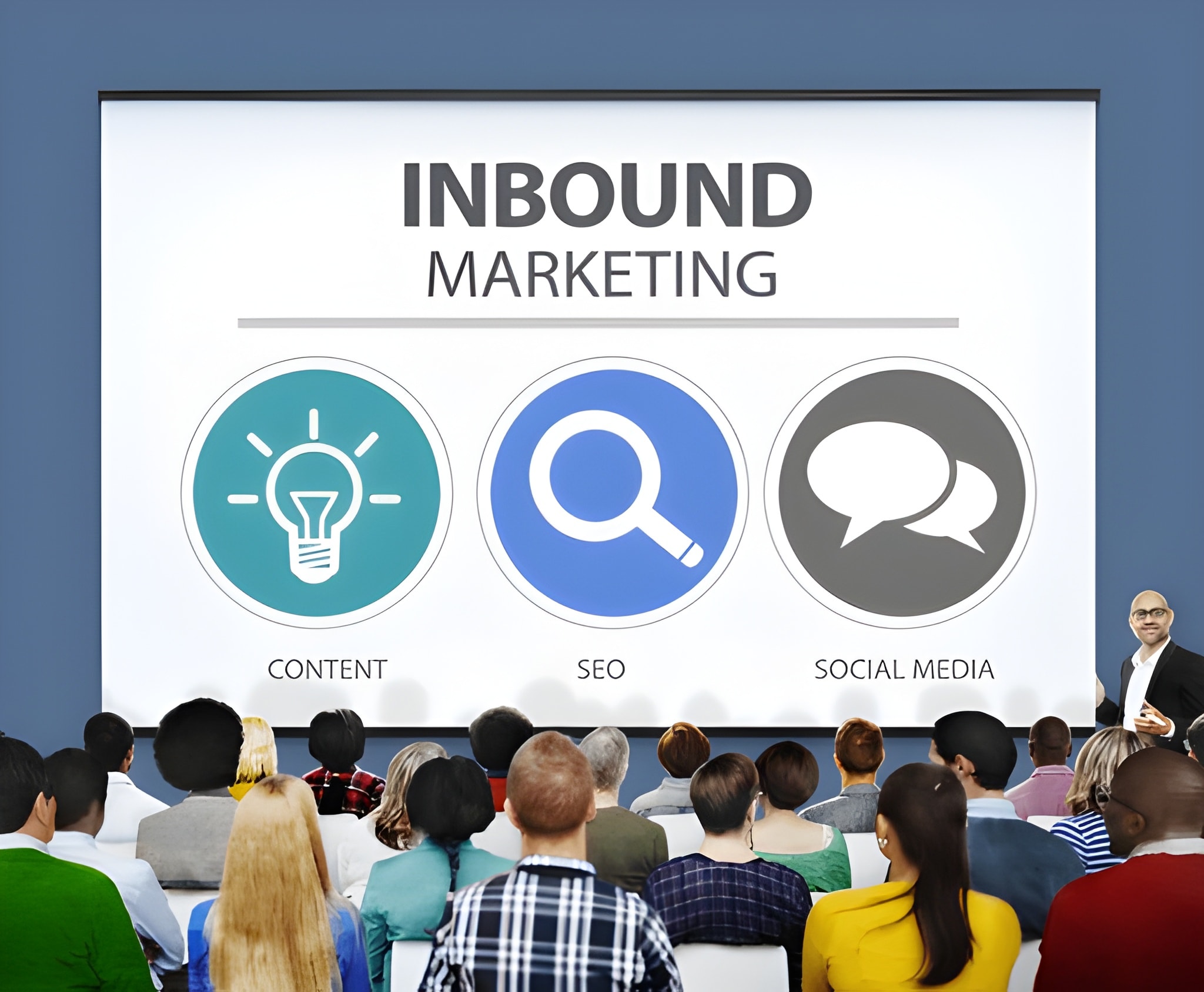Sustainable inbound marketing integrates eco-friendly values into every stage of the customer journey. By creating green personas, producing authentic environmental content, optimizing for sustainability keywords, and tracking both marketing and environmental metrics, brands build trust, attract conscious consumers, and strengthen long-term loyalty.
As environmental awareness becomes a driving force behind consumer decisions, brands must adapt their inbound marketing strategies to meet the values of a more eco-conscious audience. Sustainable inbound marketing isn’t just about sprinkling “green” buzzwords into your copy; it requires a holistic approach that weaves environmental responsibility into every stage of the customer journey—from attraction and engagement to conversion and delight.
Why Sustainability Matters in Inbound Marketing

Recent studies show that over 70% of consumers are willing to pay a premium for sustainable products and services. Inbound marketing thrives on trust and authenticity, so integrating sustainability can deepen customer relationships, elevate brand perception, and improve long-term loyalty. By demonstrating genuine commitment to environmental concerns, you create a powerful, values-driven narrative that attracts like-minded prospects and encourages referrals.
Building an Eco-Conscious Buyer Persona
Traditional buyer personas focus on demographics, pain points, and purchase triggers. For sustainable inbound marketing, layer in environmental values, lifestyle habits, and media consumption preferences. Ask questions such as:
- Which green causes do they support?
- How important is carbon footprint reduction in their purchase decisions?
- What content formats (blogs, podcasts, videos) do they trust for eco-related topics?
This insight helps tailor messaging that speaks directly to their commitment to sustainability—and positions your brand as a trustworthy steward of the planet.
Crafting Eco-Friendly Content Themes
To engage eco-savvy audiences, develop pillar content around themes such as green innovation, ethical sourcing, and zero-waste tips. Consider the following formats:
- Green Storytelling: Share case studies of how your product or service reduces environmental impact. Use data on energy savings, waste diversion, or carbon offsetting to bring credibility.
- Educational Guides: Publish step-by-step tutorials on sustainable living—such as eco-friendly packaging hacks or sustainable supply chain audits.
- Interactive Tools: Create calculators to estimate individual carbon footprints or quizzes to identify sustainable lifestyle scores.
- Video Series: Produce short documentaries or interviews with environmental thought leaders to build authority and emotional connection.
Optimizing for SEO with Green Keywords
Use Long-Tail Keywords for Specific Queries:
Include phrases like “how to reduce packaging waste” or “best biodegradable office supplies” to capture niche search traffic and attract highly targeted eco-conscious audiences.
Optimize for Voice Search:
Eco-conscious consumers often use voice assistants. Incorporate conversational phrases like “what are eco-friendly alternatives for daily products?” to capture voice queries.
Create Topic Clusters Around Sustainability:
Develop pillar pages on broad topics (e.g., sustainable living, green business practices) and link to supporting content. This improves SEO authority and helps users navigate related content easily.
Leverage Structured Data Markup:
Add schema for articles, products, and reviews to help search engines understand your sustainability content and enhance visibility in search results.
Optimize Image and Video Content:
Use descriptive filenames and alt text with green keywords for infographics, videos, and charts. Visual content is highly shareable and boosts SEO relevance.
Monitor Keyword Performance Regularly:
Track rankings, impressions, and click-through rates for your green keywords. Adjust content and metadata based on analytics to maintain top performance.
Local SEO for Sustainability Efforts:
If your eco-friendly initiatives have a local impact (e.g., community recycling programs), optimize local listings with sustainability keywords to attract nearby conscious consumers.
Internal Linking Strategy:
Connect blog posts, case studies, and tools around green topics to keep visitors engaged longer, improve page authority, and boost overall SEO performance.
Optimize Content for Mobile:
Many searches for eco-friendly tips occur on mobile devices. Ensure pages load quickly, are mobile-friendly, and maintain readability to support SEO rankings.
An SEO-driven approach ensures your eco-content ranks for queries that matter most to conscious consumers.
Distributing Green Content Across Channels

Inbound marketing thrives on multi-channel distribution. To reach eco-aware audiences, consider:
- Social Media: Share bite-sized sustainability tips on Instagram Stories or create a LinkedIn article series on your green initiatives.
- Email Campaigns: Segment your list by interest in environmental topics and send targeted newsletters highlighting new eco-resources.
- Webinars and Virtual Events: Host live panels with sustainability experts to drive lead generation and thought leadership.
- Partnerships: Collaborate with eco-friendly influencers or non-profits to co-create content and tap into aligned audiences.
Measuring Impact: Key Metrics for Sustainable Inbound Marketing
Tracking performance is critical to optimizing any inbound strategy. For sustainability-focused initiatives, include both traditional and eco-centric metrics:
- Conversion Rates on Eco-Focused CTAs:
Track how well sustainability-themed calls-to-action—such as downloading a green report or joining a climate-focused newsletter—perform compared to standard CTAs. - Content Completion Metrics:
Measure completion rates for long-form sustainability guides, videos, webinars, or documentaries. High completion suggests deeper interest and stronger message resonance. - Engagement on Sustainability Landing Pages:
Analyze scroll depth, click-through rates, and interaction with embedded tools such as carbon calculators or lifecycle assessments. - Email Metrics for Eco-Segmented Audiences:
Review open rates, click-through rates, and unsubscribe trends for subscribers who opted in for sustainability updates. Growth in this segment shows rising eco-interest. - Customer Lifetime Value (CLV) of Eco-Conscious Leads:
Many green-focused customers show higher loyalty. Track whether sustainability-focused leads engage longer, buy more ethically aligned products, or show better retention. - Impact of Sustainable Storytelling on Brand Sentiment:
Use sentiment analysis tools to evaluate how your audience reacts to sustainability posts, campaigns, or announcements. Positive sentiment indicates trust and alignment with your values. - Referral and Word-of-Mouth Growth:
Eco-conscious customers often advocate for brands they believe operate responsibly. Track referrals, mentions, and tag-based shares to measure organic advocacy. - Sustainability Certification Engagement:
If you highlight certifications (e.g., Fair Trade, FSC, B Corp), track interactions with pages or assets related to these seals. High interest reinforces consumer desire for proof-based claims. - Operational Efficiency Metrics:
If your brand reduces packaging waste or optimizes energy use, track and share improvements. These internal metrics can strengthen external marketing narratives. - Progress Toward Public Sustainability Goals:
Create a visual dashboard or quarterly update showing your progress on commitments like emissions reduction, waste minimization, or renewable energy adoption. Transparency builds trust and credibility.
Real-World Examples: Brands Leading with Sustainability
- IKEA’s Circular Design Initiatives:
IKEA promotes a long-term sustainability roadmap focused on renewable materials, energy efficiency, and circular product design. Their content strategy includes educational videos, sustainability microsites, and detailed annual impact reports that demonstrate measurable progress. - Seventh Generation’s Advocacy Approach:
This brand uses content not just for marketing but for activism—raising awareness about climate justice, ingredient transparency, and responsible consumption. Their storytelling blends product value with environmental education to create a community-driven movement. - Microsoft’s Carbon-Negative Commitment:
Microsoft publicly shares detailed carbon reduction strategies, publishes annual sustainability reports, and uses data-rich dashboards to track emissions. Their transparency and science-based targets position them as a leader in corporate accountability. - Allbirds’ Carbon Footprint Labels:
Every Allbirds product includes a visible carbon footprint score. They consistently publish data on materials, supply chains, and emissions, offering consumers full transparency and reinforcing trust. - Unilever’s Sustainable Living Brands:
Unilever showcases how brands like Dove, Lifebuoy, and Ben & Jerry’s integrate sustainability into product development and marketing. Their multi-channel storytelling highlights responsible sourcing, community impact, and long-term environmental commitments. - Local and Niche Brand Examples:
Small businesses also succeed with sustainability by documenting behind-the-scenes stories—such as showcasing biodegradable materials, ethical production, or partnership with recycling initiatives. Their content often feels more personal and relatable, appealing to conscious consumers. - Industry Benchmarking:
Beyond well-known brands, many companies use sustainability frameworks such as B Corp Certification or GRI reporting standards. Reviewing these public reports helps you understand how top brands structure their goals, metrics, and communication styles.
Best Practices for Authenticity
- Show Proof of Impact: Share measurable outcomes such as reduced waste, energy savings, or improved supply chain efficiency. Use simple visuals—like infographics or annual impact summaries—to make data more understandable and trustworthy.
- Highlight Your Sustainability Journey: Authenticity comes from showing progress over time rather than pretending to be perfect. Document early initiatives, lessons learned, and future commitments. Showing the evolution of your sustainability strategy builds long-term credibility.
- Use Third-Party Audits: External evaluations from recognized environmental organizations add legitimacy to your claims. These audits can validate your goals and demonstrate that you’re holding your business accountable to real standards.
- Feature Team and Community Voices: Share stories from employees, partners, and communities affected by your sustainability efforts. These human perspectives help audiences connect emotionally and see the real-world impact of your initiatives.
- Avoid Overclaiming Benefits: Keep your messaging factual and grounded. If certain products or practices are only partially sustainable, acknowledge limitations while explaining how you plan to improve them.
- Maintain Consistency Across Channels: Ensure your sustainability message stays aligned across your website, social media, emails, and product packaging. Mixed messages can create doubt and weaken trust.
- Encourage Engagement and Transparency: Host Q&A sessions, publish annual sustainability reports, and invite audiences to ask questions. Openness fosters trust and strengthens brand–consumer relationships.
Scaling Your Sustainable Inbound Program

Once you’ve built a foundation, broaden your efforts by automating repetitive tasks with marketing platforms that track environmental metrics and performance. Use workflows to nurture leads with personalized eco-content based on behavior, and integrate CRM data to align sales conversations with your sustainability narrative.
Conclusion
Sustainable inbound marketing offers a unique opportunity to connect with an increasingly eco-conscious audience. By developing green personas, crafting authentic eco-content, optimizing for targeted keywords, and measuring both marketing and environmental KPIs, you’ll build deeper trust and drive growth that benefits both your business and the planet. Embrace sustainability as a core component of your inbound strategy, and watch conscious consumers become your most passionate advocates.
FAQ for Sustainable Inbound Marketing
1. What is sustainable inbound marketing?
Sustainable inbound marketing is an eco-focused approach that weaves environmental responsibility into content creation, audience engagement, and brand messaging to attract and retain eco-conscious customers.
2. Why is sustainability important for inbound marketing?
Consumers increasingly prefer brands that reflect their environmental values. Sustainability builds trust, strengthens brand reputation, and increases long-term customer loyalty.
3. How do I create an eco-conscious buyer persona?
Include environmental priorities like preferred green causes, lifestyle habits, purchase motivations, and content formats they trust for sustainability information.
4. What types of content work best for eco-focused audiences?
Green storytelling, sustainability guides, carbon calculators, video interviews with experts, and case studies that highlight environmental impact.
5. Which keywords should I target for green SEO?
Terms like “sustainable business practices,” “eco-friendly packaging,” “carbon footprint calculator,” and other high-intent sustainability queries.
6. How can I distribute sustainable content effectively?
Use social media tips, email segmentation, webinars, partnerships with eco-friendly influencers, and cross-channel storytelling.
7. How do I measure the success of sustainable inbound marketing?
Track organic traffic, engagement rates, lead quality, social shares, backlinks, and environmental metrics like waste reduction or carbon offset data.
8. How can brands avoid greenwashing?
Share verified data, use third-party certifications, report progress honestly, and invite community feedback to maintain transparency.
9. What tools help scale sustainable inbound marketing?
Marketing automation platforms, CRM systems, environmental tracking integrations, and content workflows tailored to eco-audiences.
10. Which brands are good examples of sustainable marketing?
Companies like Patagonia and TOMS showcase strong sustainability initiatives through transparency reports, impact data, and purpose-driven storytelling.




